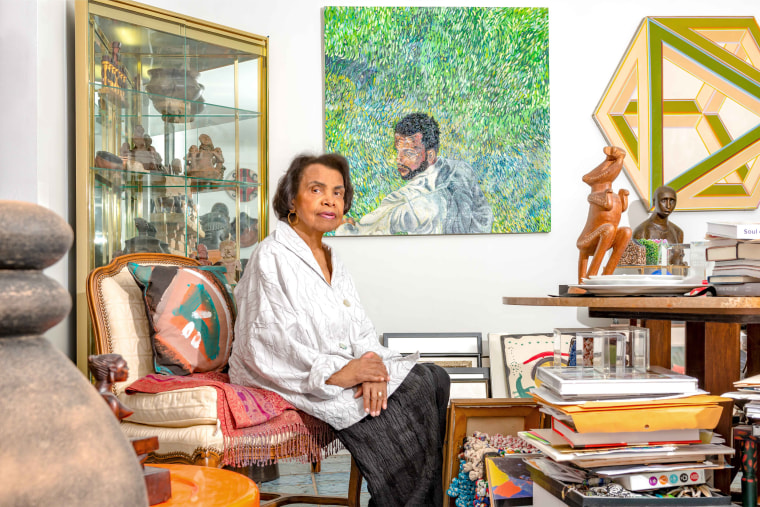Shirley Woodson has had a passion for art for as long as she can remember. When she took art classes at the Detroit Institute of Arts Museum from grade seven through high school, it opened the door for her career in art.
Woodson’s first exhibition at the museum took place during a group show of Michigan artists in the 1960s, where she displayed her oil painting “Heavy Foliage.” Six decades later, Woodson, now 85, has returned to the place where her devotion to art began, for a solo exhibition, which will be open until June. Titled “Shield of the Nile Reflections,” the display showcases colorful, acrylic paintings containing Black figures surrounded by water from the Nile River.
This exhibition is “certainly a pinnacle within my art career,” Woodson said.
As an arts educator, Woodson served as a mentor to the community while she actively painted. In her role as a supervisor of art education for the Detroit Public Schools Community District, she taught at various schools throughout the city.
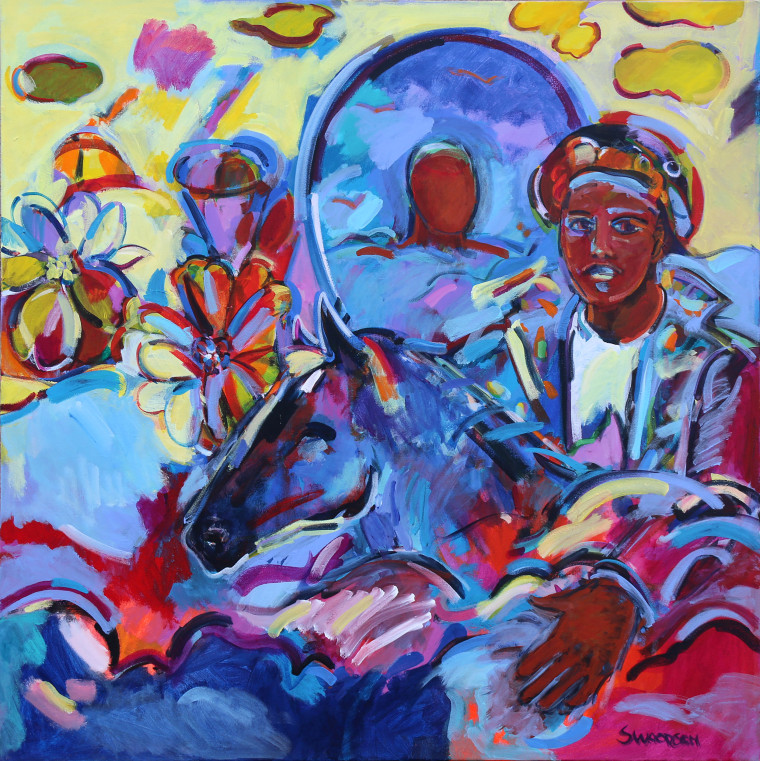
While she has had an accomplished art career, finding success also meant facing challenges from gatekeepers throughout the art world who downplayed her work. Having just graduated with her bachelor of fine arts degree, Woodson approached a gallerist with hopes of displaying her work. The gallery, which rarely accepted art from women and Black artists, told her to stick to watercolor and not to focus on other methods of painting.
At the time, Woodson said she felt watercolor was a lesser craft, compared to oil painting.
“But I just think — maybe one thing, he wasn’t interested,” Woodson said, “and he was trying to be nice, if you can call it that. But basically, you know, I guess he didn’t want to say, ‘We’re not interested in the work of, you know, Black artists,’ and so he simply put me off that way.”
Woodson also faced challenges from being both an artist and a mother of two sons. A different gallery owner said that “women just don’t get it,” fueled by the belief that women often don’t have enough time to dedicate to painting because of their role in raising children. But Woodson said she quickly dismissed that and other comments showing uninterest in her work.
“I remember I called one major New York dealer just to ask a couple of questions,” Woodson said, “and they said, ‘Oh, we’re not interested in any African American art after 1950.’”
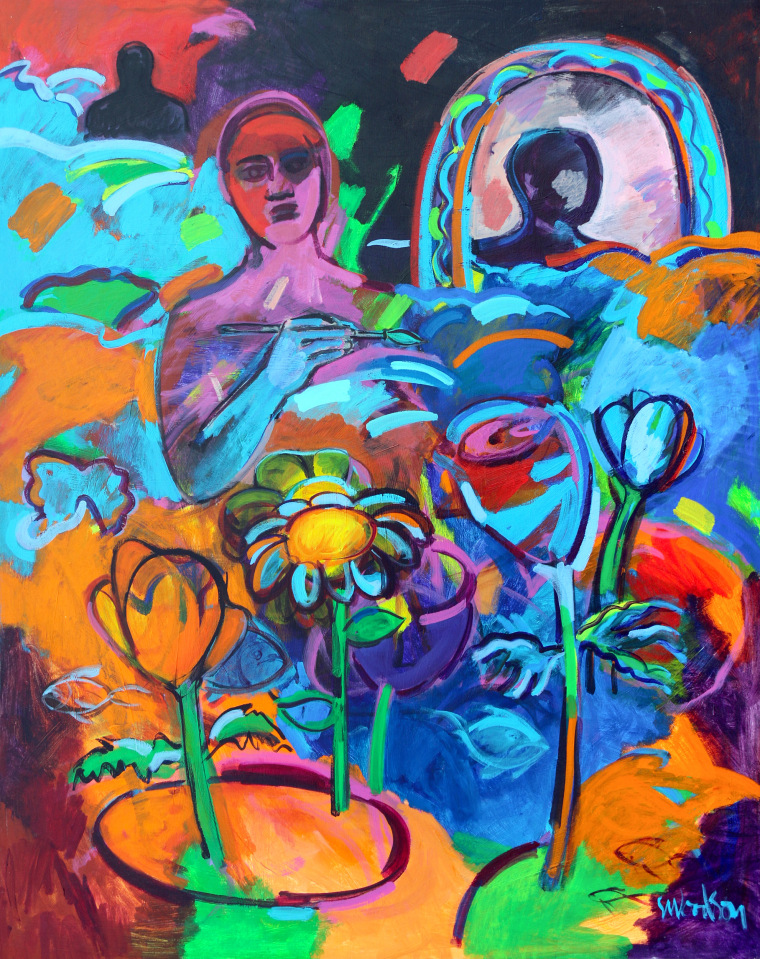
Having experienced a lack of inclusivity in artistic spaces, Woodson navigated through those challenges by networking with other artists, traveling to cities outside Detroit and visiting galleries. In 1974 she co-founded the Michigan chapter of the National Conference of Artists, built toward the advancement of Black artists.
Other artists helped Woodson gain recognition, including Samella Lewis, a printmaker, painter and art historian who included Woodson’s essay in what is now known as The International Review of African American Art.
Woodson also found mentorship and inspiration from artist Gilda Snowden, with whom she collaborated for the series "Ancestors Known and Unknown," which took place in 1990 under the exhibition, "Coast to Coast: Women Artists of Color." The exhibition, which featured works from female artists of color, traveled across the country. Woodson and Snowden also collaborated on a book project documenting the exhibition.
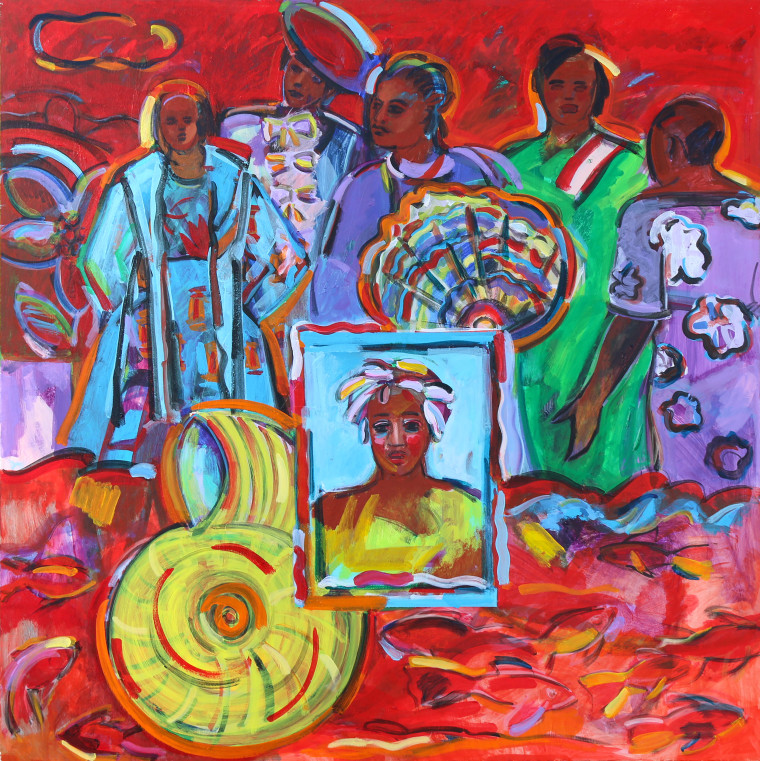
In the 1980s, Woodson was featured in the Illinois exhibition "Forever Free: Art by African American Women, 1862 to 1980," which included other notable artists such as Elizabeth Catlett and sculptor Edmonia Lewis, who both portrayed womanhood and Black heritage in their work.
Now a prosperous artist, Woodson continues to reach milestones. In January, she was named the Kresge Foundation's eminent artist of the year for her contributions and professional achievements in the Detroit arts scene. Woodson's receiving the award caught the attention of Valerie Mercer, curator and head of the African American department at the Detroit Institute of Arts, who selected Woodson’s paintings for “Shield of the Nile Reflections.”
Mercer said Woodson’s influence as an artist, educator and mentor influenced her being selected for a solo exhibit.
“We’re trying to do more with the African American artists in Detroit,” Mercer said, “and Shirley is certainly key to all that — and she’s mentored many of them.” Among such artists include designer and educator Elizabeth Youngblood and painter Peter Crow.
Housed in a city known for birthing talented musicians, the Detroit Institute of Arts highlights local artists, like Woodson, to enhance the public’s knowledge of Afrocentric art. Mercer said the idea behind the creation of the institution stemmed from a broader lack of knowledge about African American art, which fuels the need for it to be embraced by American culture.
“There’s definitely artists in New York that came from here, because this city does really nurture their creative people,” Mercer said.
Complementary to other African American artists, Woodson’s work reflects her identity as a Black individual and woman. The female figures in her latest exhibition convey her own identity of starting a new journey and its new discoveries, which is reflected in the color blue. Mercer said Woodson’s work reflects this identity, along with her experiences of the world. After spending time with the artist and learning about her journey, Mercer also said she can clearly see Woodson, Woodson’s family and interests within the paintings.
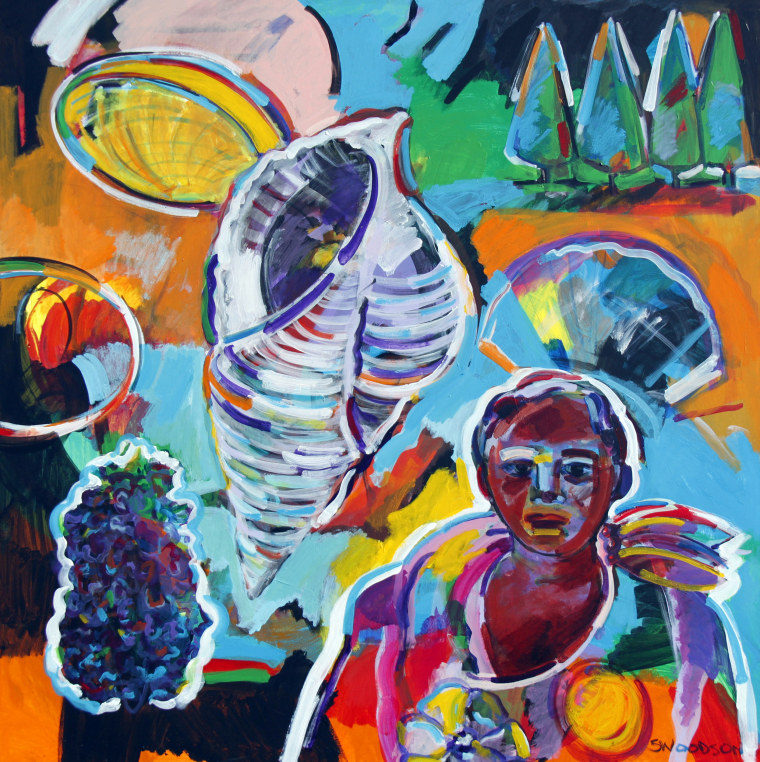
The symbol of identity is a common theme displayed throughout Woodson’s creations. In her early career, Woodson said she painted Black figures without facial features to symbolize anonymity. This invisibility, she said, ties to the historical context of how Black people were not seen as people. Fish, shells, plants and the composition of running water also appeared in Woodson’s earliest work, which symbolized the feeling of being overwhelmed.
“So I would combine these faceless people,” Woodson said, “and then sometimes I would just simply put a band across their eye, so they did not see. I wanted viewers, specifically Black viewers, to see all the possibilities we have behind this mystery of race and difference.”
In addition to painting, Woodson channels her creativity through other art forms, including photography, drawing and, lately, digital printmaking.
Woodson said she has no intention of treating this exhibition as a capstone of her career. She plans to heed the advice she gives to aspiring artists: keep painting.
“I love art, and I love my culture,” Woodson said, “and I want to contribute to it for as long as I can.”
